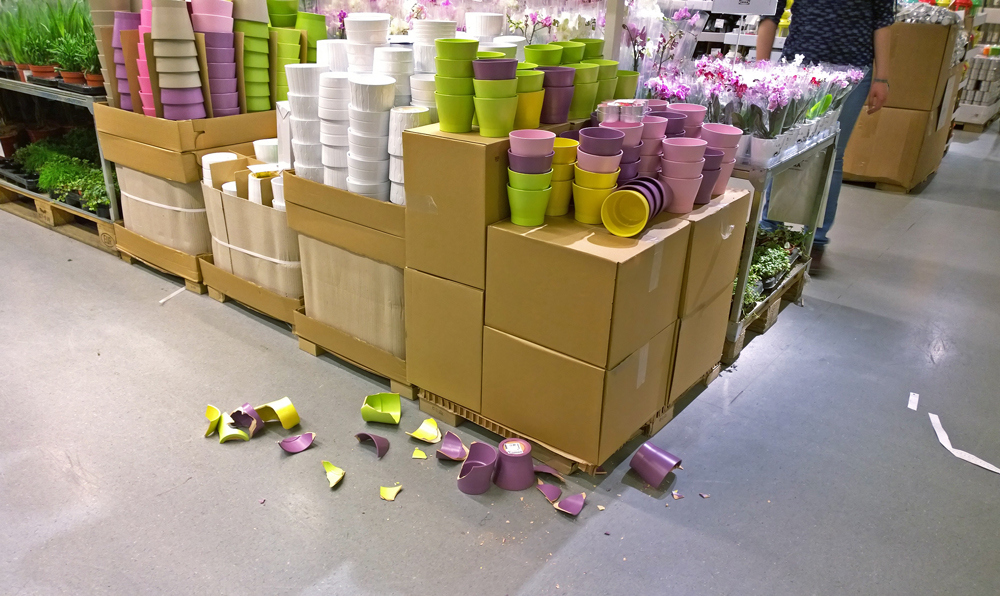When sales increase significantly, there is a high probability of a rise in operating shrinkage due to the intensified movement of products into and within the store. Therefore, it is critical to know how to minimize this situation, which could affect profitability if not managed properly.
Although the pandemic has had a negative effect on several industries, the situation is quite different for home improvement. In fact, several indicators shed light on this, projecting good results for 2021.
For example, in 2020 in the United States, there was a 25% sales increase during the last quarter in home improvement stores. In Mexico, the hardware segment grew by 40% in the first half of the year alone. In 2021, there was a 12.6% growth of household goods’ sales and other items such as electronics, and the available projections are for an increase in all categories.
Shrinkage can be categorized into several types — the most relevant for home improvement retail being operational and administrative shrinkage. Administrative shrinkage is caused by errors in records when merchandise enters or leaves the store. In contrast, operational shrinkage is mainly caused by carelessness, improper operations (by people inside or outside the company), negligence, or other situations within the store.
Here are 4 tips to minimize shrinkage in your store operation and improve product availability on your shelves:
1. Establishes periodic inventory checks with different frequencies and objectives.
It is essential to make daily adjustments that allow, among other things, the detection of breakage incidents through visual inspection. For example, a store opening checklist is a good practice to achieve this, which will clarify the situation before starting daily operations.
To improve product availability, it is crucial to minimize the differences between theoretical and physical inventories. Carrying out cyclical inventory procedures, especially of predefined critical SKUs or those in any promotional activation, will allow to count and adjust inventories, diminishing the gaps.
Additionally, a review of the list of products with the highest historical risk of shrinkage can help minimize the operational shrinkage of these products within the store.
2. Control of breakage and damage of products and packaging.
There are always products that are not fit for sale for various reasons, so stores must remove them from the shelves.
Stores must have a defined process to remove from shelves all items whose sensory characteristics are not suitable for sale. This work routine should include the adjustment of stock in the information systems in addition to the process of returning the products to the supplier or physically eliminating it.
There are several causes for a product to be unsuitable for sale, such as product packaging failures; deficient product’s handling in the replenishment process, customer’s poor handling of displayed products; poor storage of products at the warehouse; and problems in the transfer of merchandise to points of sale, from the supplier or distribution centers.
Stores must ensure that these products are not found in the salesroom, requiring continuous reviewing. Only this process will ensure that those products that are available on the shelves are in proper condition. The support of a task manager is ideal for implementing these types of procedures since it can raise tickets to the responsible areas if the products are in poor condition, allowing them to be removed in half the time of a traditional process.
3. Theft and fraud
The reality is that on several occasions in stores, there are thefts by alleged customers or employees of the company, which fail to be detected in time because there is no record of the place where it occurred, the modality, or the number of products that were stolen. There is no traceability of the part of the chain where the problem occurs.
These situations generate business losses, so it is essential that when a theft is detected, methods are implemented to prevent it from happening again by developing established protocols and eventually working on their prevention. Stores can avoid fraud by establishing control in the products’ administration and sale processes. The technological support of a platform to keep this record, as Frogmi, allows in a short time to identify risk factors, to measure, and above all, to report easily and quickly these movements to eventual internal audits.
4. Reception
Products’ reception is considered one of the most complex operational processes. Thus, stores must pay enough attention to it. Product reception to the stores must be rigorous. If everything in this process is carried out perfectly, all the following stages are simplified. However, due to the rigorousness required, this can result in a long and often inefficient process.
There are several problems that store associates can find within product reception. Among them is the lack of information regarding the transfer of products from the distribution center to the store, warehouse, or salesroom; code errors or SKU labeling; final quantity of products received that does not match the inventory due to handling or packaging problems. Finding any of these unconformities would lead the associate to occupy several work hours to detect and correct the error. Thus, delaying the products’ progress to the shelf, possibly generating an Out of Stock, and losing sales.
In Frogmi, we have successful cases with customers who have implemented their processes in the receiving area through our task manager. They have gained a reduction of 3 hours in the products’ reception process in every store, cutting by half the time between the truck arrival and the products stocking on the shelves. These results are based on the improvements made to the whole process, especially regarding high-value products.
At the same time, we have been able to take an x-ray of all the processes involved, automating tasks with other areas and identifying bottlenecks. In this way, we generate continuous improvement processes, control wastage, and optimize execution times, liberating associates’ time to focus on higher-value tasks.




